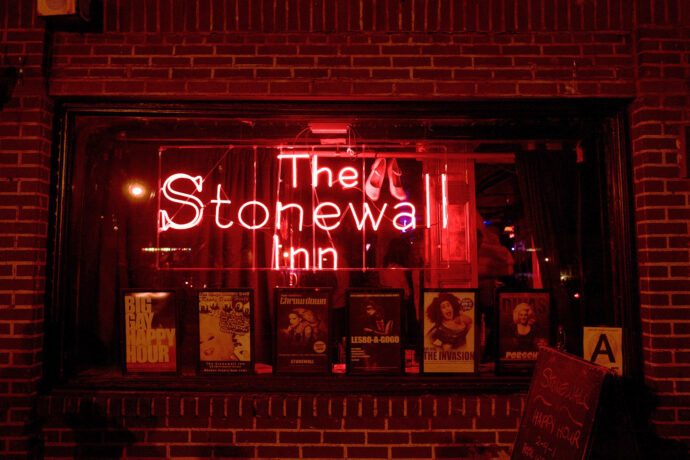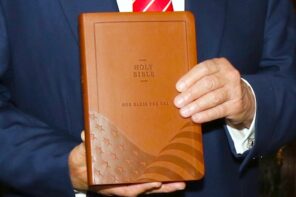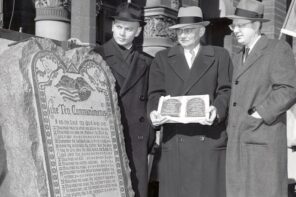Now that we have marriage equality, and the Pope is hugging gay friends, what more is there to say about the gay community and religion?
Quite a bit, if you ask Heather White, author of Reforming Sodom: Protestants and the Rise of Gay Rights. And the conversation should start with a re-interpretation of recent history.

Reforming Sodom: Protestants and the Rise of Gay Rights
Heather R. White
University of North Carolina Press (2015)
Historians are detectives. They ferret around to find clues that will change the way we understand past events. Not all historians are as gifted (or lucky) as White, however, whose excellent and lucid account challenges three sacred cows in the study of LGBT religion, namely that the Bible condemns homosexuality, that religion has played a major role in obstructing gay rights, and that Stonewall was the moment that began the American gay rights movement.
If we were playing “two truths and a lie” you might not guess which one her detective work failed to dislodge.
Does the Bible condemn homosexuality?
Those of us in the LGBT religious world have fought hard to convince people that the Bible doesn’t really condemn homosexuality. We have made arguments that the Bible prescribes many things that we ignore (like stoning a rebellious son, or boiling a kid in its mother’s milk for example). We have pointed to change over time and proved that the Hebrew and Greek terms in Biblical texts couldn’t possibly have relevance to LGBT relationships today. We have examined those texts closely to uncover what they might have meant in context. And we have asserted that values in the Bible (like “love your neighbor”) contradict the message of hatred towards gays that’s implied by the Bible-thumpers. And many in the LGBT community have simply “turned the other cheek” and have considered the battle not worth waging.
But White brings a new and powerful argument that makes the battle worth it after all. If you look back at the King James translation of the Bible, you’ll discover, as White did, that the word “homosexual” was never mentioned; it didn’t exist. And when you examine pre-twentieth century commentaries, you’ll find that the things that are condemned are masturbation, idolatry, and other kinds of non-procreative sex acts, regardless of who was performing them.
How then, did the Revised Standard Version (the translation of the Bible that replaced the KJV as it’s known to Bible scholars) come to use the term “homosexual?” White explains that it was liberal Protestants, who welcomed the modern psychological idea that homosexuality was a curable disease that afflicted persons (rather than a willful act that was sinful or criminal) who were responsible for the change.
This historical insight demonstrates definitively that arguing the bible condemns homosexuality is an anachronistic idea.
Has religion always played a major role in obstructing gay rights?
White argues persuasively that it was the liberal Protestant enthusiasm for twentieth-century science that inadvertently made it appear that the so-called Judeo-Christian tradition was at the root of homo-hatred. What those liberal Protestants wanted, and what later developments obscured, was a kinder, gentler approach to those who suffered from sexual maladies.
Believing, as liberals did in that era, that homosexuality was an illness, they saw themselves as pastors who could help those who were suffering to a better life. White uncovers the many clergy and religious leaders around the United States who, in the 1940s and 1950s, when persecution of homosexuals was at its height, supported nascent homophile organizations (as they were then known). She tells stories that conclusively document their political and pastoral work, contradicting the commonly held idea that religion is by definition anti-gay.
While her work doesn’t discount the role religion has played in obstructing gay rights, her examples of sometimes misguided but deeply sincere religious support for gay rights—especially in the pre-Stonewall era of terrible persecution—are important additions to the story.
Did Stonewall inaugurate the American gay rights movement?
White’s work shows conclusively that the organized fight for gay rights was going on well before Stonewall. Just like Rosa Parks’ refusal to move to the back of the bus could never have happened if a movement for civil rights wasn’t already in place, White reminds us not only that there was already a movement that included an “Annual Reminder” on July 4 at Independence Hall (whose 50th anniversary we celebrated last summer) but also that there was a strong religious presence in that movement.
Yet no matter how many LGBT historians have tried to dislodge the Stonewall story from its primacy, it won’t go away. White accepts that this “lie” will not die, and cleverly argues, like the good religious historian she is, that it has its place (like the Exodus narrative in the Bible) as the foundational myth that will continue to be commemorated.
This idea of Stonewall as sacred commemoration, however, is a crucial change in the narrative, as it emphasizes the religious nature of Stonewall, and the key role it will continue to play in American civil religion.
Reforming Sodom has been filed on my own shelves under the ever-expanding category of “truth and lies”—it’s a fine read that deserves a place on any reading list devoted to religion, LGBT, or the art of historical scholarship.





